What are area control and area influence games?
Exploring area influence and area control in Lord of the Rings: Duel for Middle-earth and Beak, Feather, & Bone
Welcome to Skeleton Code Machine, an ENNIE-nominated and award-winning weekly publication that explores tabletop game mechanisms. Subscribe to TUMULUS to get more design inspiration delivered to your door each quarter!
Don’t miss last week’s Gift Guide which shamelessly included a link to TUMULUS, the new quarterly publication from Skeleton Code Machine! Shipping four times over the course of a year and with no pesky auto-renew, it really would make a fine gift.
This week we are looking at one, specific part of Lord of the Rings: Duel for Middle-Earth: the area control board.
Lord of the Rings: Duel for Middle-earth
The Lord of the Rings: Duel for Middle-earth (Bauza & Cathala, 2024) is a reimplementation of 7 Wonders Duel (Bauza & Cathala, 2015), and is very similar to the original in many ways.1 The core mechanism is still open drafting cards from a pattern of layered cards available to both players. Some cards drafted early in the game make it easier to obtain higher value cards later in the game.
Beyond the obvious re-theme to The Lord of the Rings universe, Duel adds and/or changes some important parts of the game:
Quest of the Ring: Instead of a war/military track, there is a shared Quest of the Ring track. The Fellowship player tried to get to Mount Doom and the Sauron player tries to catch the Fellowship player.
Support of the Races: Green cards now have symbols to form alliances with the six races — elves, dwarves, hobbits, humans, ents, and wizards.
Conquering Middle-earth: A new map of Middle-earth with seven connected locations. Both players can add and move units on the map, as well as fortresses.
Each one of these three parts has a sudden death victory condition associated with it. For example, as soon as a player gathers six (6) race symbols from the green cards, they win and the game ends. Similarly, if either player is ever present in all seven (7) regions on the map, they immediately win the game.
It’s the map of Middle-earth that I found particularly interesting. Let’s take a closer look at that part of the game.
The central board
The rulebook calls the map of Middle-earth “the central board” and players can interact with it in the following ways:
Add units to a location
Move existing units from one location to another location
Place a fortress by taking a landmark tile
Moving units to capture locations on a map certainly sounds like a wargame, but in this case combat is simple. If both players have units in the same location (i.e. a “conflict”), each player removes one of their units from the location. They repeat this process until at least one player has no more units in the location. For example, if Sauron has 3 units in Gondor and the Fellowship moves 2 units into Gondor, units would be removed until there is only 1 Sauron unit left in Gondor.
Fortresses are, however, different. They are not removed in a conflict. They remain in place and keep the player present in that location.2
The important part is that a player need only be present in all 7 regions (with a fortress or 1 unit) to immediately win the game. Even if the opposing player has their units in the same location as the fortress, the player with presence in all regions wins.
This type of mechanism seems like area control, and yet it doesn’t feel like you really need to “control” each location. You don’t even need a majority in a location to be present and win the game. If it’s not strictly area control, what is it then?
What is area control?
Here’s how BGG describes the Area Majority / Influence mechanism:
Multiple players may occupy a space and gain benefits based on their proportional presence in the space.
It’s a popular mechanism (and personal favorite of mine), with over 6,600 linked games in the BGG database. Looking at the most popular linked games, it’s easy to see that many are either wargames (e.g. War of the Ring: Second Edition, Twilight Struggle, Root) or have some wargame roots (e.g. Blood Rage, Eclipse: Second Dawn for the Galaxy, Inis). Modern euro-style games have implemented versions of this as well, moving it away from direct combat (e.g. Hansa Teutonica, Lacrimosa) and using it in interesting ways.
With all these variations, the terms Area Control, Area Influence, and Area Majority are often used interchangeably and with very loose definitions. This is noted by Geoff Englestein in Building Blocks of Tabletop Game Design (p. 485-490).
He says (emphasis added):
The term area majority is sometimes used in place of area control, and another term area influence is also used. There isn’t a reliable definition for any of these terms. But here’s one way to think of them: Area Influence is the highest-level category, which would cover all types of relationships between players, their tokens, and the specific areas they inhabit. Area Majority and Area Control would be two sub-branches of Area Influence.
Personally, I am more likely to use the term Area Control in most conversations and use it interchangeably with Area Majority and Area Influence. Although I agree that area control seems to best describe combat in Blood Rage, and area influence is a good term for wielding influence in The King is Dead.
Area control vs. majority vs. influence
I’ve mentioned many times before that strict definitions are rarely helpful or interesting, but it’s often helpful to look at common characteristics.3 We can look at each mechanism and see what differentiates it from the others, how conflict is involved, or how rewards (e.g. victory points) are handled.
Here is an attempt to find what makes each of these mechanisms distinct:
Area Influence: Both presence and/or influence in an area matter. Because the amount of influence can vary, rewards can be proportional to the amount of influence but not always. Conflict is usually limited or minimal.
Area Control: Domination of an area is usually required, and only the dominant player gains the benefits. This type of mechanism works well with direct conflict or combat. Because domination is required, benefits are all or nothing.4
Area Majority: Similar to Area Influence, but the largest or most powerful presence is considered first. Like Area Influence, players can share areas and therefore conflict is less than in Area Control. Often only the player with the majority gains the rewards, but second and third place might as well.
While Area Control usually has a single “winner” for an area, Area Influence and Area Majority games must have clear rules for handling ties.
Can area influence be used in TTRPGs?
Area control mechanisms are extremely popular in board games, especially in Ameritrash games. It is significantly less common in tabletop roleplaying games.
One game doesn’t exactly use area control, but I think it comes very close to the idea of it: Beak, Feather, & Bone by Possible Worlds Games. It’s a map-labeling, worldbuilding game inspired by other map-making games such as Avery Alder’s The Quiet Year. While most TTRPGs are cooperative by design, Beak, Feather, & Bone is described as a “lightly competitive” game.
Players choose from some pre-made factions (e.g. The Farmers, The Soldiers) and take turns drawing playing cards from a deck. Depending on the card suit, they claim a location (e.g. building) on the unlabeled map provided with the game and describe it: What do people say about this place? What does it look like? What is it like on the inside?
After five turns or so, the game ends.
The really interesting part is that after the final turn, the players add up the values of the cards they have drawn. The player faction with the highest total “has the most sway in the community and is given control of the Seat of Power.”
There is a “winner” of the game, even if the method to determine it is merely the sum of random cards drawn from a deck.
I could easily imagine a version of Beak, Feather, & Bone that is more than just “lightly competitive” with increased player agency in determining who claims the seat of power at the end.5
Conclusion
Some things to think about:
Area control: Area control is an extremely popular tabletop game mechanism that can be found in classic wargames as well as modern (non-combat) euro-games. The most interesting variations are more than just being the only player present in a given area.
Messy definitions: With all the variations, the terms Area Control, Area Majority, and Area Influence are often used interchangeably. While I think it’s helpful to understand the differences, I also don’t think it’s a big deal to call everything area control. There are so many different ways to implement it, that each one requires a specific explanation anyway.
Area control in TTRPGs: While Beak, Feather, & Bone touches on area control as a mechanism, I’m sure there are other TTRPGs or that that use it more explicitly. If you are familiar with examples, I’d love to hear about them in the comments!
What do you think? Do you enjoy area control mechanisms in games? Can you think of some ways to implement them in TTRPGs?
— E.P. 💀
P.S. There are still some TUMULUS Founder subscriptions available, and the first issue ships in December. Don’t wait to subscribe!
Skeleton Code Machine is a production of Exeunt Press. All previous posts are in the Archive on the web. Subscribe to TUMULUS to get more design inspiration. If you want to see what else is happening at Exeunt Press, check out the Exeunt Omnes newsletter.
The Lord of the Rings: Duel for Middle-earth is quite the mouthful of a title, as is the upcoming The Fellowship of the Ring: Trick-Taking Game. As tempting as it may be to refer to them as TLOTRDFM and TFOTRTTG, I’m going to refer to the former as Duel for this article.
There are a few ways to remove fortresses in the game, but my goal is not to do a full rules explanation. One way is to trigger one of the three Ent race effects which removes a fortress.
For more on insufficient definitions, I’d refer you to Plato’s Mech from MECH WEEK.
Blood Rage (Lang, 2015) is a good example of this. All players play cards, determine their strength, and there is either one winner or everyone loses. All losing players must destroy their figures. Interestingly, however, players might want to lose a battle on purpose.
In fact, I have a playable draft of such a game in my notebook right now!

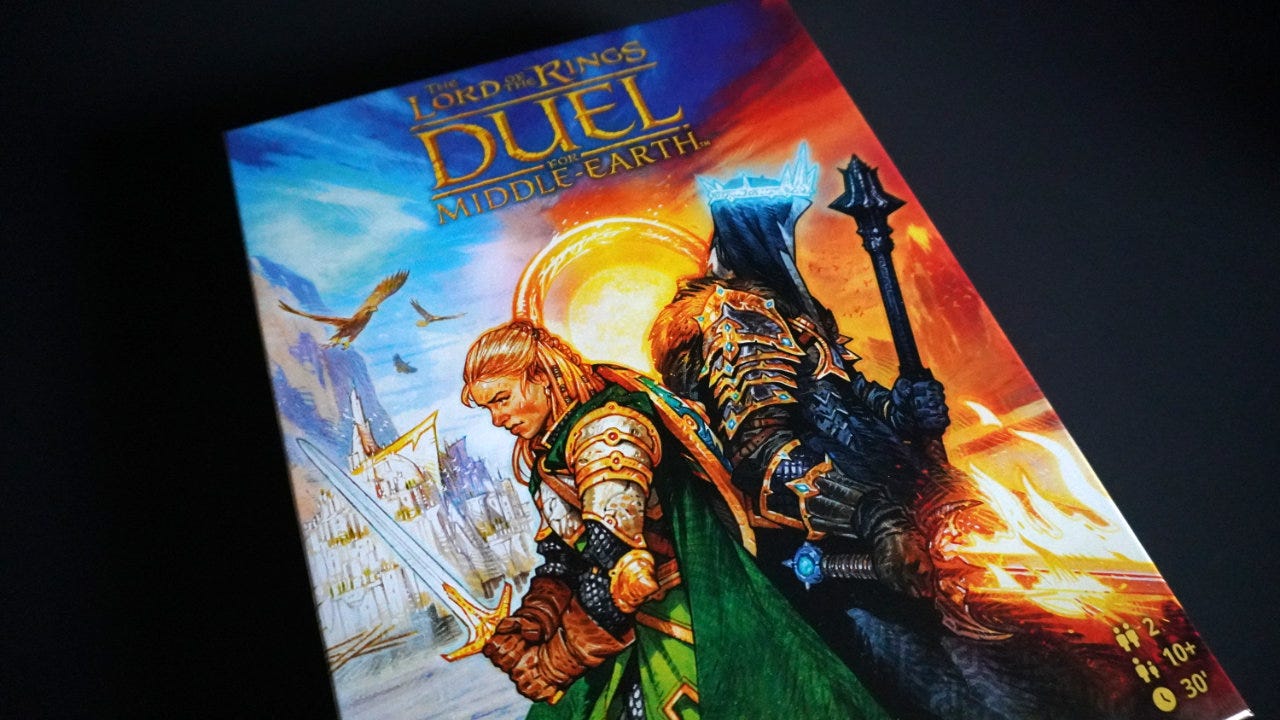

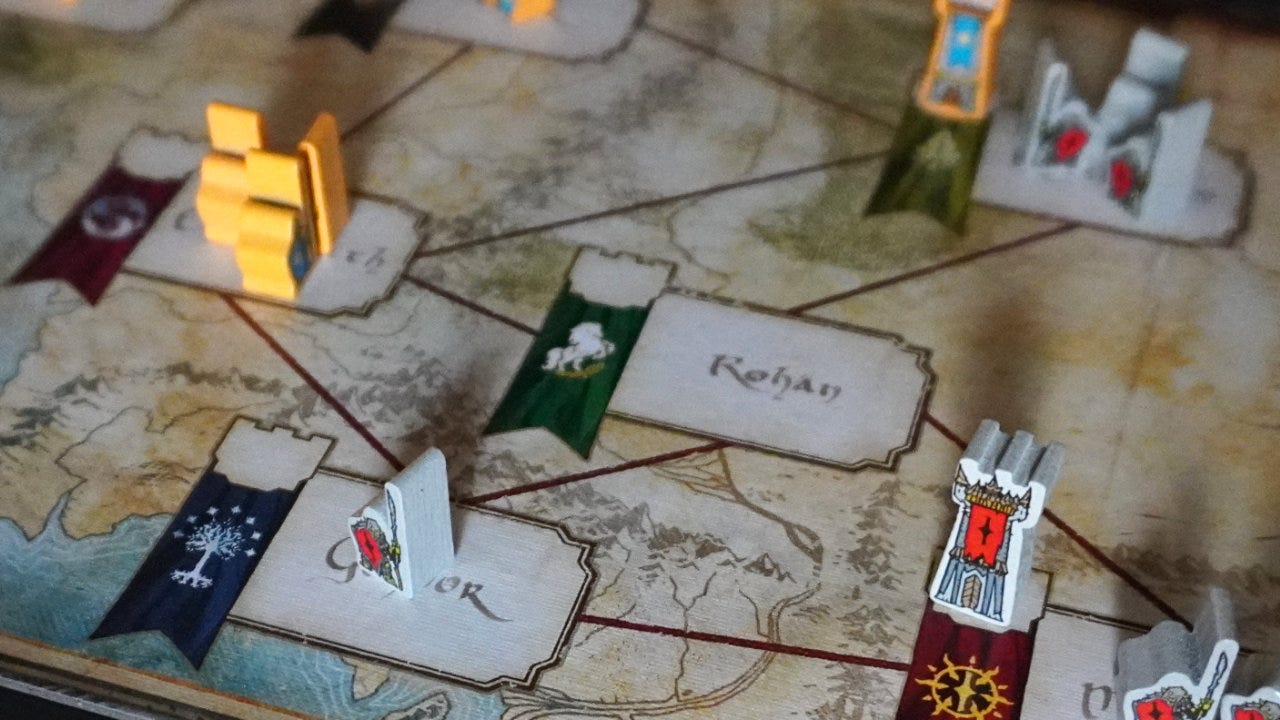
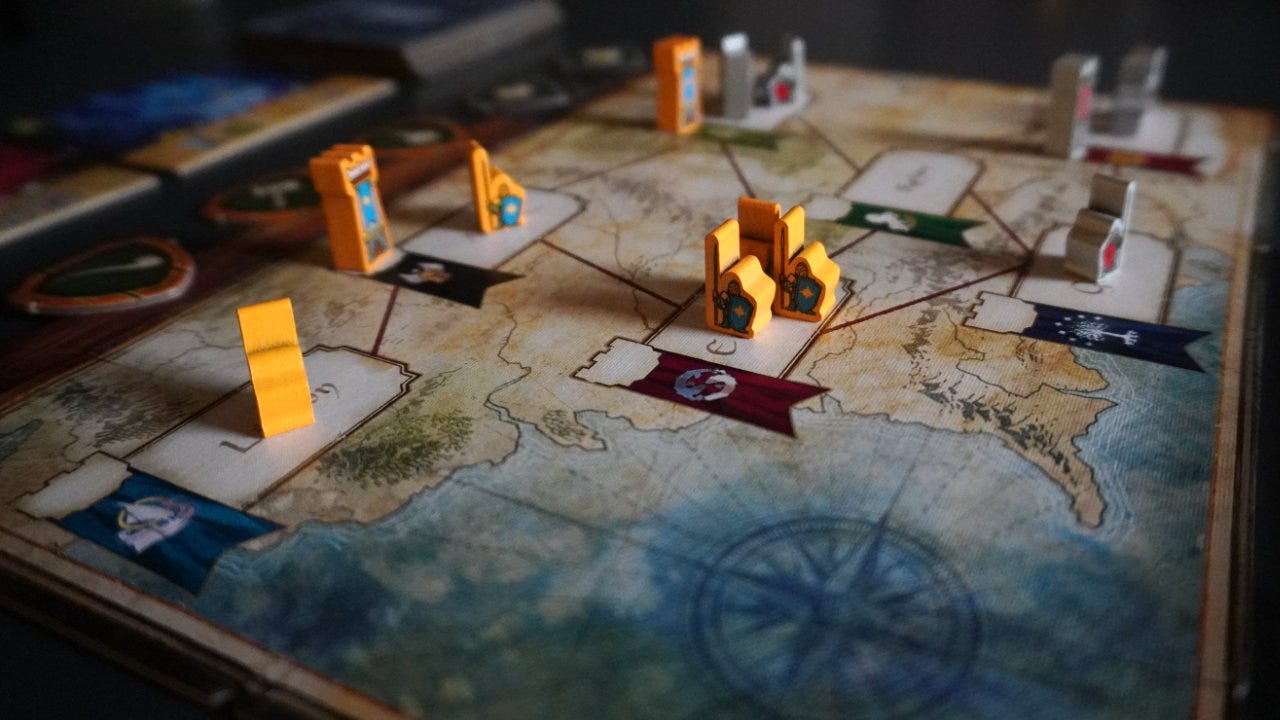
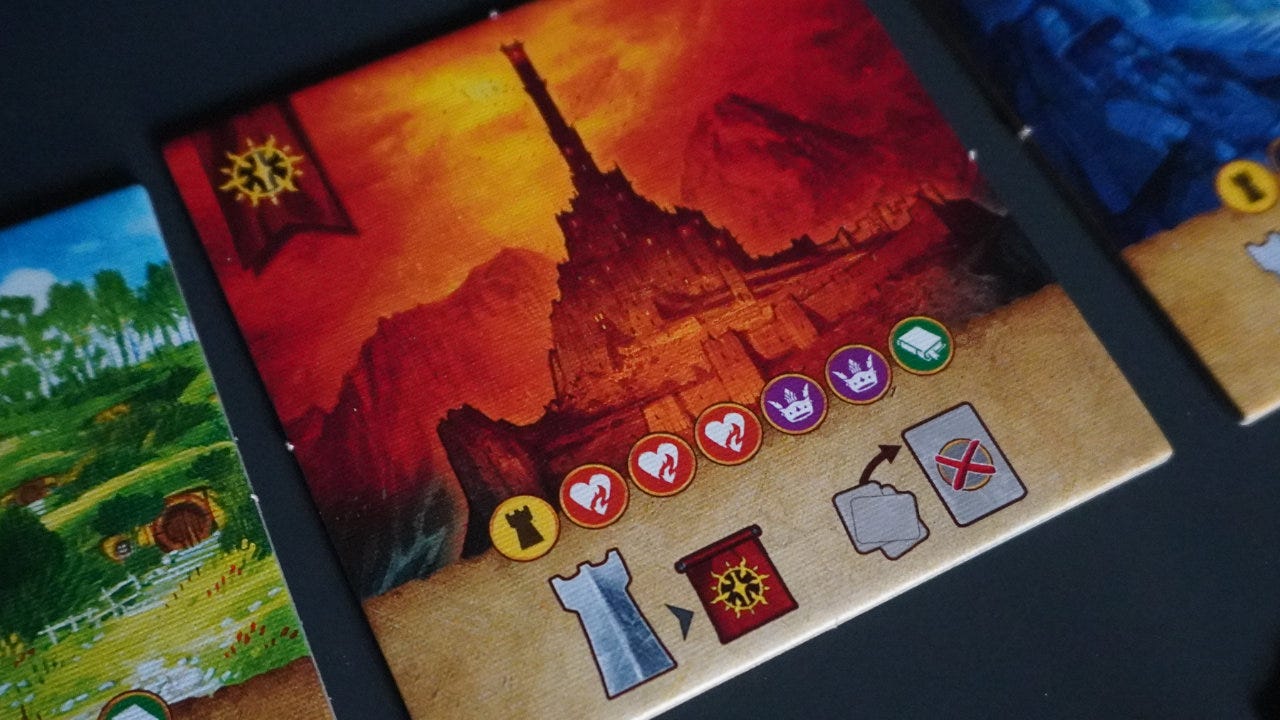

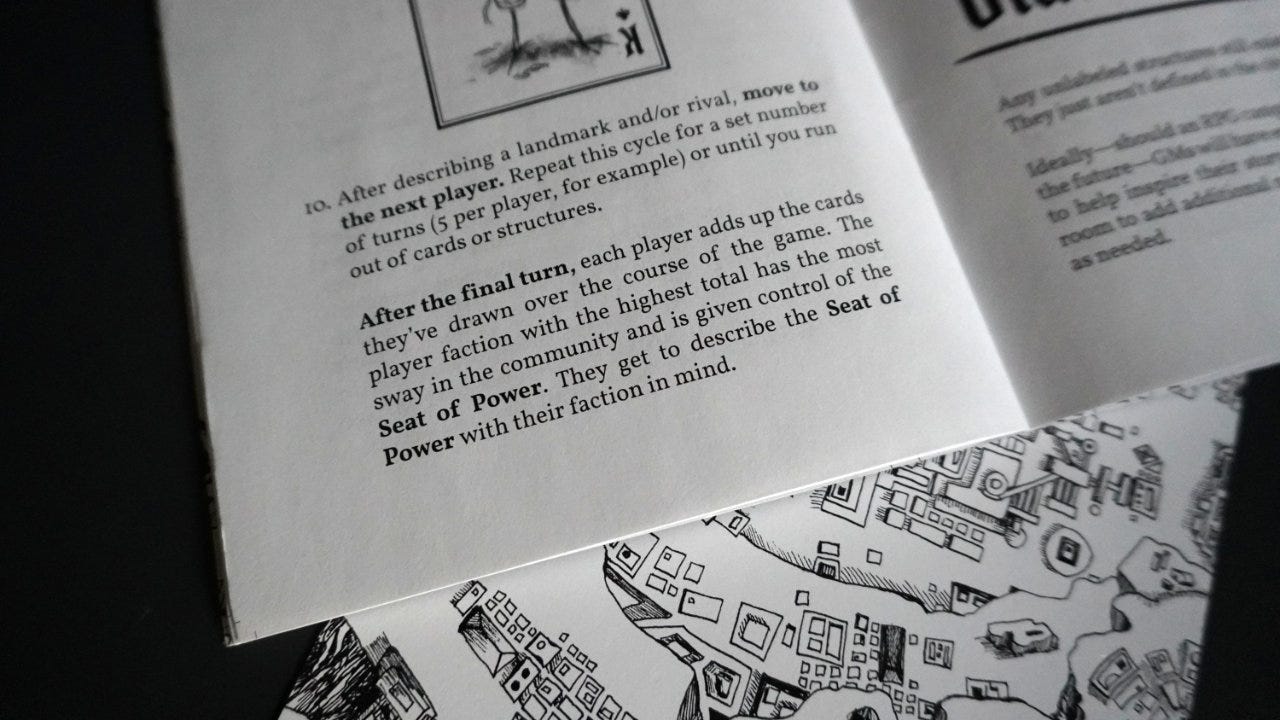
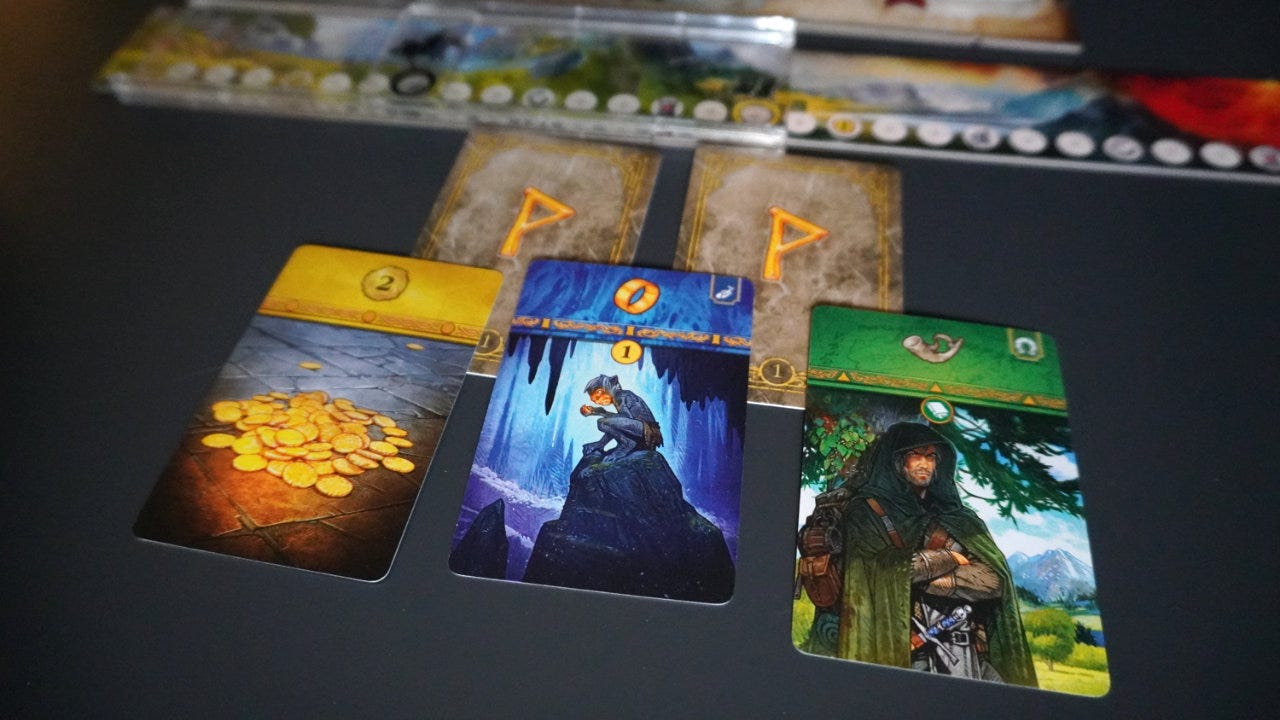
I should have mentioned that there is an SRD available for BF&B: "This Systems Reference Document (SRD) is aimed at artists, designers, writers, and publishers who’d like to build on and/or adapt the rules and ideas found in Beak, Feather, & Bone, a tabletop roleplaying game by Tyler Crumrine."
Grab it here and make some games: https://possible-worlds-games.itch.io/bfb-srd
I really like the different pathways to instant-win in the Duel game described. I can very much see two players racing along different tracks to win this game, and you end up torn between trying to slow the advance of your opponent to their goal and pushing toward completing your own.
The TTRPG connection is interesting! I did not know about the faction-play in Beak, Feather, & Bone, but it makes me want to pick this game up and see how I might adapt it to other themes.